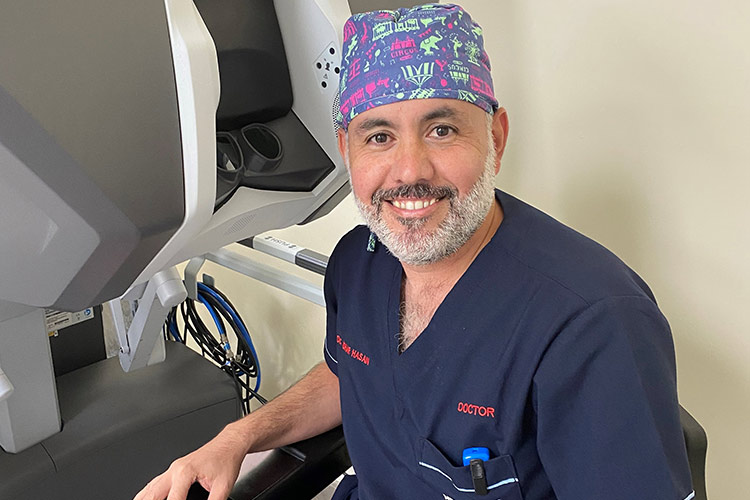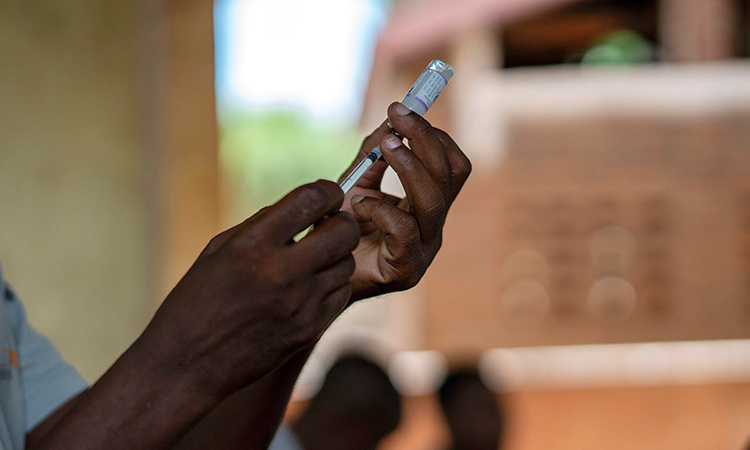Not getting enough Vitamin D could lead you to serious trouble

Dr Arkan Harb Alhuneiti, consultant paediatric orthopedic & spine surgeon at Burjeel Hospital, Dubai.
Manjula Ramakrishnan
Vitamin D is the only nutrient the body produces when exposed to sunlight. It is also got from supplements and a very small amount comes from few foods such as salmon, herring and sardines, cod liver oil, canned tuna, oysters, shrimp, egg yolk, mushroom, milk, orange juice, cereal and oatmeal.
“Despite such easy availability, up to 50 per cent of the world's population doesn’t get enough sun. This is partly because people spend more time indoors, wear sunblock outside and eat a diet low in good sources of this vitamin,” explains Dr Arkan Harb Alhuneiti, consultant paediatric orthopedic & spine surgeon at Burjeel Hospital for Advanced Surgery, Dubai.
How vital is vitamin D to the body?
Vitamin D is needed for the metabolism of calcium and phosphorus in the body, which, in turn affects how calcium is deposited in the bones; thus it is considered essential for proper bone development and growth. When it comes to building strong bones, there are two key nutrients: calcium and vitamin D. Calcium supports your bones and teeth structure, while vitamin D improves calcium absorption and bone growth. These nutrients are important early in life, but they may also help as you age. If you develop osteoporosis, a disease characterised by brittle and breaking bones, getting plenty of calcium and vitamin D may slow the disease and prevent fractures.
In addition, it also helps maintain muscle health and reduces the risk of fractures caused by falls. A number of studies have suggested that it may also reduce the risk of certain diseases such as diabetes, multiple sclerosis, and even some cancers. It is also an important factor in making sure your muscles, heart, lungs and brain work well and that your body can fight infection.
How common is vitamin D deficiency here in the region?
According to the Dubai Health Authority, close to 81 per cent of the UAE population suffers from vitamin D deficiency – it is particularly high in Emirati women. Further statistics reveal that 70 per cent of adolescent girls in Iran, 80 per cent of girls in Saudi Arabia and 20-80 per cent of supposedly healthy individuals in the Middle East suffer from vitamin D deficiency.
Who is most at risk from developing the deficiency?
In the Middle East, the risk factors of developing the deficiency are mainly for social, religious and environmental reasons. The Dubai Health Authority points out that veiled women are likely to suffer from a lack of vitamin D because they do not expose enough skin to the sun which help in vitamin D formation. Dark skinned people also at a risk for developing the deficiency because their skin does not produce enough of the vitamin compared to those with a fairer skin. Those who follow a strict vegan diet are also at risk of not consuming the recommended levels of the vitamin over time. Besides, smoking and obesity are also linked to the deficiency.
What are the typical symptoms of this deficiency?
One of the subtle yet crucial symptoms of vitamin D deficiency is bone pain, muscle weakness, stooped posture, muscle cramps and tingling. Having very pale skin may indicate that a person is at risk for vitamin D deficiency as well as for other disorders, diseases and conditions. Also study reveals that elderly individuals with low levels of the vitamin are more likely to be depressed.
What are the required levels of vitamin D?
Adults up to age 50 should get 1,000 milligrams of calcium and 200 international units (IUs) of vitamin D a day. Adults over 50 should get 1,200 milligrams of calcium and 400 to 600 IU of vitamin D.
What are the best ways to avoid developing a deficiency?
Fish like tuna, mackerel and salmon are rich in the vitamin. Sun exposure is a good source of vitamin D. Roughly 30 minutes under the rays when the sun is at its peak in the afternoon and twice a week is ample exposure. Foods fortified with vitamin D, such as cereals, milk, cheese and soy products, have extra vitamin D added in. When you can’t get vitamin D naturally, then taking supplements is the next best step.
Despite year-round sunshine, why is vitamin D deficiency so high in this region?
The high summer temperatures mean it is less likely for the residents to enjoy time out in the sun, leading to a tendency to develop the deficiency.







